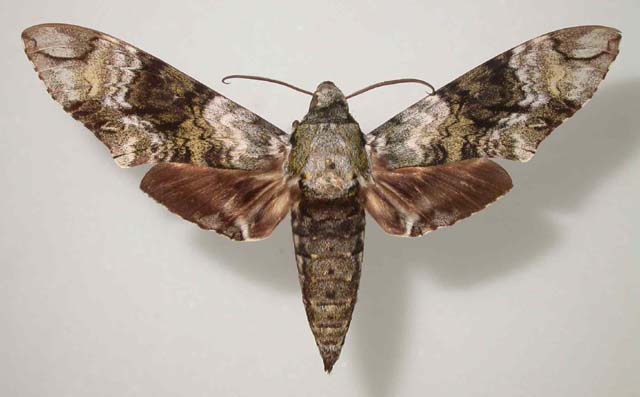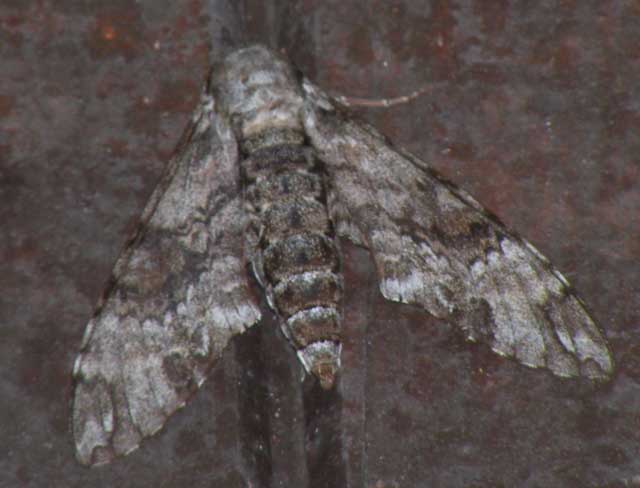Manduca huascara
|
|
Updated as per personal communication with Jean Haxaire
Updated as per French Guiana Sphingidae; March 8, 2011
Updated as per CATE Sphingidae; March 8, 2011
Updated as per personal communication with Jose Ramon Alvarez Corral (Barinas, Venezuela); May 27, 2012; ongoing
Updated as per personal communication with Johan van't Bosch (Brownsberg National Park, Brokopondo District, Suriname, July 8, 2011); November 23, 2012
|
Manduca huascara
(Schaus, 1941)
Protoparce

Manduca huascara,
courtesy of Jean Haxaire
This site has been created by
Bill Oehlke at oehlkew@islandtelecom.com
Comments, suggestions and/or additional information are welcomed by Bill.
TAXONOMY:
Family: Sphingidae, Latreille, 1802
Subfamily: Sphinginae, Latreille, [1802]
Tribe: Sphingini, Latreille, 1802
Genus: Manduca Hubner, [1807] ...........
Species: huascara (Schaus, 1941)
|
MIDI MUSIC
.....It's a Wonderful World.....
copyright C. Odenkirk
ON.OFF
<bgsound src="world.mid" LOOP=FOREVER>
|
DISTRIBUTION:
Manduca huascara (wingspan: males: 118-119mm; females: 127-130mm)
flies in
Colombia (specimen type locality);
French Guiana: Piste Coralie; Saul; Piste Kaw;
Suriname: Brokopondo District: Brownsberg National Park (JvB); and
probably in Venezuela: Barinas (JRAC); and
Guyana.

Manduca husacara male, Saul, French Guiana,
on my home computer only.
The thorax is light grey with slightly darker grey-mixed with yellow tegulae. There is an even darker grey band across the juncture of the head and thorax.
There are no yellow patches, just whitish ones, on the sides of the abdomen.
The thin black outline of an apical, irregular trapezoid is distinct on each forewing. There are two prominent, short black bars below and external to the small
cell mark. The basal and postmedian areas are much lighter than the darker median area, which is especially dark in its upper half.

Manduca huascara, Brownsberg National Park, Brokopondo, Suriname,
July 8, 2011, courtesy of Johan van't Bosch.
FLIGHT TIMES:
Manduca huascara adults fly February and August in French Guiana, and possibly in other months.
Johan van't Bosch reports a July flight in Suriname.
ECLOSION:
Pupae probably wiggle to surface from subterranean chambers just prior to eclosion.
SCENTING AND MATING:
Females call in the males with a pheromone released from a gland at the tip of the
abdomen. Adults take nectar from flowers.
EGGS, LARVAE, PUPAE:
Larval hosts are unknown to me.
Use your browser "Back" button to return to the previous page.
Return to Sphingidae Index
Return to Sphingini Tribe
This page is brought to you by
Bill Oehlke and the
WLSS. Pages are on space rented from Bizland. If you would like
to become a "Patron of the Sphingidae Site", contact Bill.
Please send sightings/images to Bill. I will do my best to respond to
requests for identification help.
Enjoy one of nature's wonderments: Live
Saturniidae (Giant Silkmoth) cocoons.
 | 
Show appreciation for this site by clicking on flashing butterfly to the left.
The link will take you to a page with links to many insect sites. |




